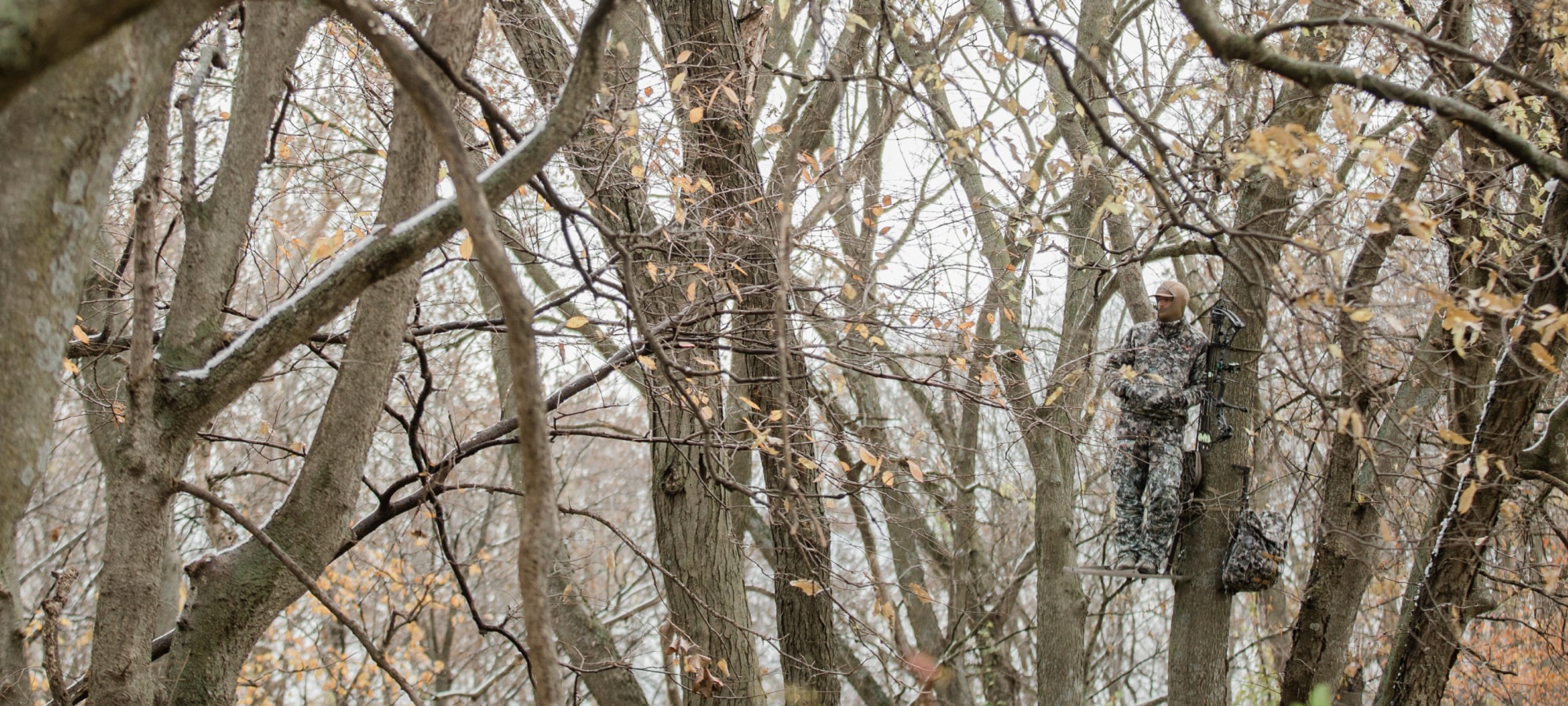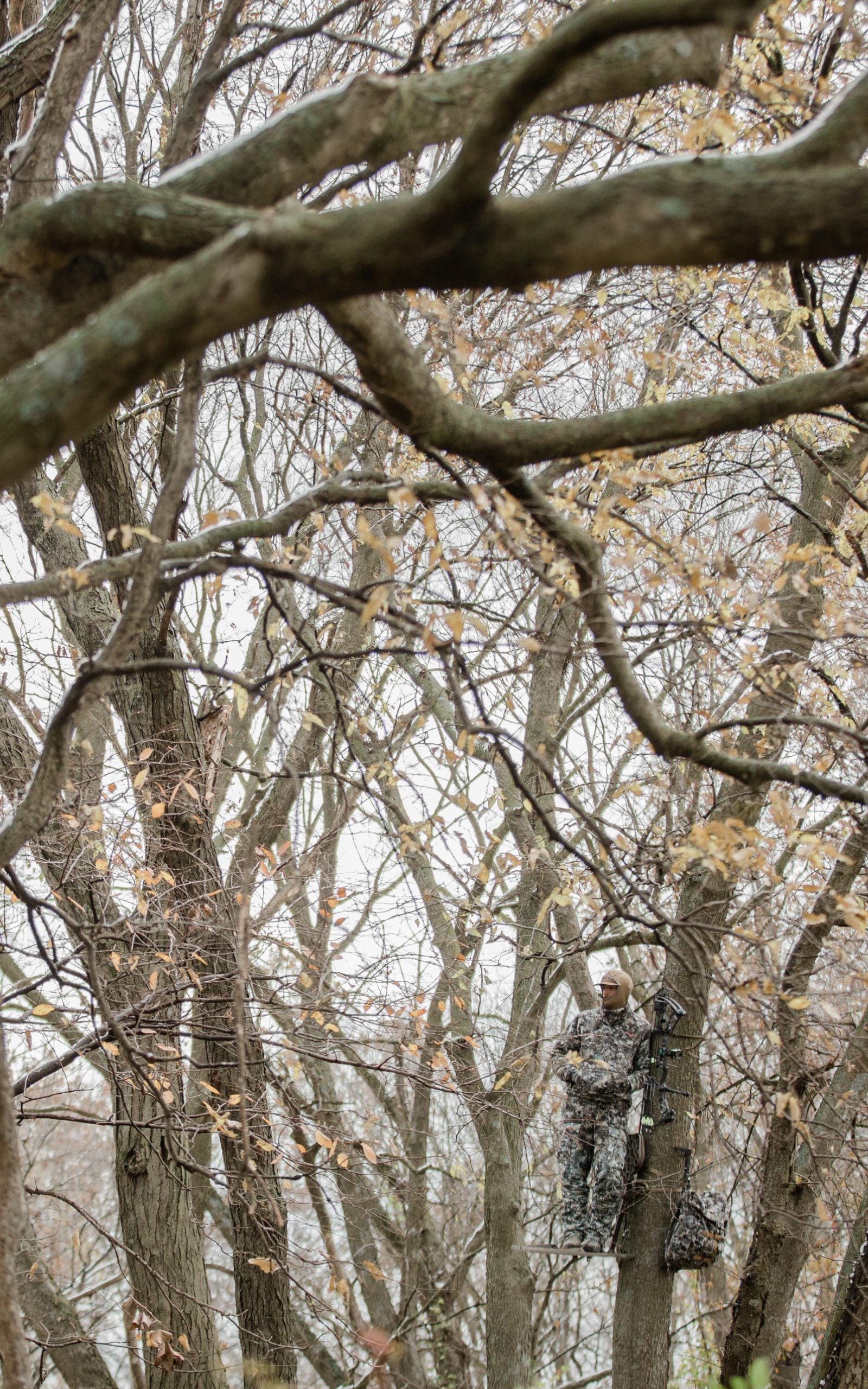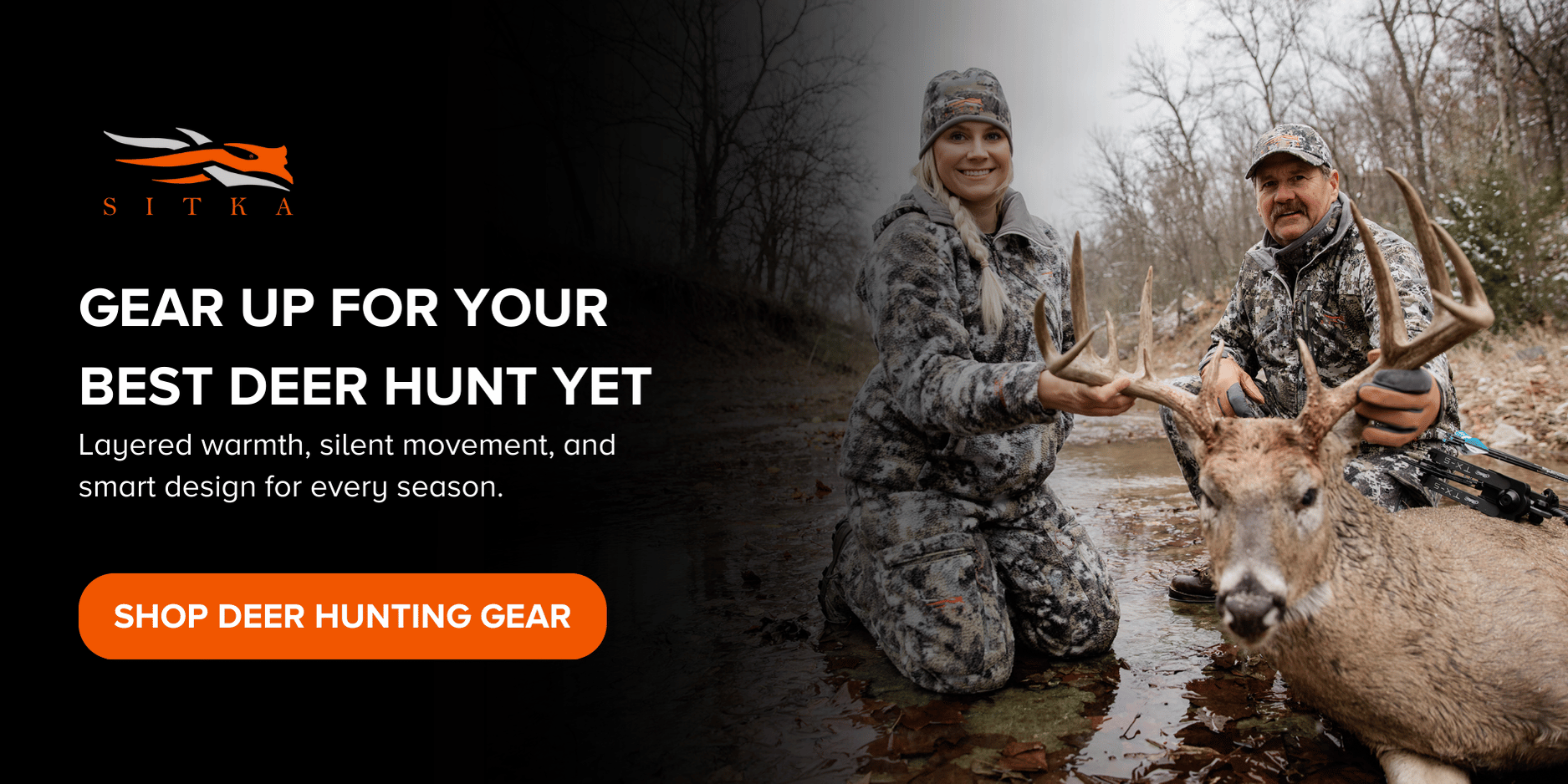10.15.2024
Best Camo for Deer Hunting Explained
Choosing the right camouflage clothing for deer hunting is crucial for success. Deer have sharp vision and are quick to notice movement, so wearing camo designed for the specific environment is essential. For instance, in wooded areas with dense foliage, certain patterns might help hunters blend into the underbrush. In landscapes that are more barren, different camo patterns might work better.
Additionally, different regions have varying vegetation, requiring hunters to select camo patterns that accurately reflect the local flora. Effective camouflage minimizes the chances of spooking deer, allowing hunters to get closer and improve their chances of a successful shot. Beyond visual concealment, some camo hunting clothing is designed to reduce noise and scent, further enhancing stealth. By choosing the right camo, hunters can better align themselves with their environment, reducing detection by deer and increasing their overall success rate. The right hunting camouflage is a key element in the strategic planning of any deer or big game hunt.
Understanding Deer Vision
Getting close to a mature whitetail deer is no easy task. Their senses are fine-tuned through years of evolution to make them the ultimate prey animal. While there are many different patterns and manufacturers of camo clothing on the market, most camouflage was not designed with science in mind. Instead of designing a camo system that looks like the surroundings, SITKA and GORE designed OPTIFADE concealment patterns that optimize micro and macro patterns that make hunters unrecognizable even when detected. Let’s get a better understanding of how deer vision works.
Deer Color Vision
Deer possess two types of cone photopigments, lacking the "red" cone for long wavelength colors. They are red-green colorblind, seeing only short (blue) and middle (green) wavelength colors [1]. Hunters wearing green, red, or orange are equally visible to deer, while blue would disadvantage them.
Deer have excellent vision in low-light conditions due to several adaptations in their eyes, like their large, horizontal slit-shaped pupils that can open up to three times wider than human pupils [2]. This allows much more light to enter their eyes in dim conditions. Additionally, unlike humans, deer do not have a built-in UV filter in their eyes. This allows them to see shorter wavelengths of light (blues) more effectively, which are most abundant during twilight hours [1].
The Science Behind Vision
Vision is the result of light entering the eye and being received by specific cells at the back of the eye. These cells then send signals to the brain, which processes these signals into the ability to see. The brain interprets the color based on the wavelength of the reflected light [3]. Essentially, objects themselves do not possess color; they reflect light of different wavelengths that our brain perceives as color. The color spectrum spans from ultraviolet at the short end to infrared at the long end. While humans can see the range of colors in between these two extremes, they generally cannot see ultraviolet or infrared light [4].
It is also crucial to understand the structure of the eye. In all mammals, the retina, positioned at the back of the eye, contains two kinds of light-sensitive cells known as rods and cones. Rods work in low or dim light conditions, allowing for black and white vision. On the other hand, cones are responsible for vision in well-lit environments and are essential for daytime and color vision [5].
Human vs Deer Color Vision
Human color vision is rich due to the presence of three types of cone photopigments (specialized light-sensitive cells) in our eyes. One cone type is tuned to short-wavelength light (blue), another to middle-wavelength light (green), and the third to long-wavelength light (red) [6]. This three-color vision system, known as trichromatic vision, represents the most sophisticated form of color vision observed in mammals. Deer, on the other hand, have dichromatic vision, possessing two types of cone photopigments in their eyes, as opposed to the three types found in humans.
Color Perception & Ultraviolet Light
As mentioned, unlike humans, deer lack a UV filter in their eyes that blocks 99% of harmful UV light, enhancing their vision in the UV spectrum but reducing fine detail perception [1]. This explains why deer often move their head from side to side when spotting hunters. Human UV filters act like yellow shooting glasses, sharpening detail but sacrificing sensitivity to short wavelengths, particularly UV light.
Movement Detection
Whether they admit it or not every hunter has been busted by the eyes of a deer. No matter if you are spot-and-stalk hunting mule deer in the plains, sitting a ground blind on the edge of agriculture, or hanging from a saddle in the hardwoods, a hunter’s goal is not just to blend in but to disappear. That can be hard to do when a deer has 300-310 degrees of vision. Their eyes are positioned in their head so that deer can see all but the 50-60 degrees directly behind them [7]. Deer are able to process what they see 2x faster than humans in daylight and 2.5x faster in low light conditions [8]. Given how fast deer can process what they see, it makes sense to design a camo system with minimal visual stimulation in mind. Instead of trying to look like a tree, leaf, or other natural object, OPTIFADE patterns are engineered to turn the hunter into nothing.
Selecting the Right Camouflage
Environment Matching
There are several factors to consider when choosing your concealment system for your deer hunting gear.
Variety in Hunting Environments
Hunting settings can differ greatly across regions and seasons, impacting the effectiveness of camouflage patterns. It's important to take into account various elements when deciding on the most suitable camouflage for your hunting expedition.
Consideration of Foliage Characteristics
The color and quantity of foliage play a significant role in determining the ideal camouflage pattern to use. Different seasons result in varying foliage colors, influencing the effectiveness of camouflage. For instance, green camo patterns work best in spring and early fall when foliage is lush, while brown-patterned camo blends well during the late fall with changing leaves.
Assessment of Foliage Density
The density of leaves in a particular forest area can guide hunters on whether to opt for a leaf-embedded pattern or a tree bark-like design for effective camouflage. Observing the foliage quantity in the hunting area is essential for selecting appropriate camouflage attire.
Adaptation to Hunting Setup
The specific hunting setup, whether in a treestand, ground blind, or on foot, determines the most suitable camouflage pattern. Darker patterns are ideal for blending into the darkness of a ground blind, whereas hunters perched in a treestand may prefer patterns that mimic the surrounding forest canopy.
Matching Camouflage to Hunting Scenarios
Different hunting scenarios may require tailored camouflage choices. For instance, for mobile deer hunters might hunt in creek bottoms, agriculture, and hardwoods in the same weekend, a versatile concealment system that matches various types of terrain can be advantageous. It's crucial to identify the hunting environment and setup before each hunt to select the most effective camouflage attire.
Seasonal adaptation
Each season introduces new vegetation, colors, and lighting, necessitating different types of clothing to seamlessly and comfortably blend into the environment. In the warmer months, it's crucial to wear light, breathable fabrics for comfort while out in the field. As autumn approaches, the landscape transforms into earthy tones of browns, oranges, and yellows. Fall also brings cooler weather, so opting for camo hunting gear that provides warmth without compromising stealth is vital. In the brutal cold weather of late-season, warm gear keeps hunters out in the field longer, and the right system can help fill tags.
Explore our selection of hunting baselayers and hunting jackets to ensure you're prepared for every season.
The Science Behind Effective Hunting Camo Patterns
Mimicry Vs. Disruption
GORE OPTIFADE concealment patterns were created in response to the question of why hunters are trying to hide from deer in the first place. Instead of trying to blend into the surroundings, OPTIFADE allows hunters to become nothing to the eyes of deer.
Mimicry camouflage works by replicating the colors, patterns, and textures found in the natural environment to help hunters blend into their surroundings. This type of camouflage is designed to make the wearer appear as part of the landscape, thereby avoiding detection by animals with keen eyesight like deer. Here’s how it works:
Color Matching
Mimicry camo uses colors that match the environment where it will be used. For example, in a forest, the camo might feature greens, browns, and grays to blend with leaves, tree bark, and shadows.
Pattern Design
The patterns in mimicry camo are designed to make hunters look like nature. These patterns often include shapes and lines that mimic the look of natural elements like leaves, branches, and grass.
Texture Simulation
Mimicry camo also tries to simulate the texture of the natural environment. This can involve using high-definition printing techniques to create realistic images of foliage, rocks, and other natural elements on the fabric.
Disruptive camouflage can be considered better than mimicry camouflage for deer hunters due to its specific design principles that emphasize breaking up the human outline and creating visual confusion.
Disruptive camo uses bold, contrasting patterns and shapes to break up the outline of the human body. This makes it harder to recognize the distinct shape of a person. By disrupting the outline, hunters can blend more effectively into a variety of backgrounds, as the human silhouette is less noticeable.
Versatility Across Environments
While mimicry camo is tailored to specific environments by replicating exact colors and textures, disruptive camo is designed to be effective across multiple terrains. The high-contrast patterns can work in forests, open fields, or mixed environments because they confuse the eye and make it difficult for deer to detect a solid form.
Movement Concealment
Disruptive camo is particularly effective at concealing movement. Since deer are highly sensitive to motion, the erratic and high-contrast patterns of disruptive camo can mask small movements, making it harder for deer to spot the hunter when they shift position.
Adaptation to Changing Conditions
Disruptive camo is less dependent on the exact match of the environment's current colors and patterns. Seasonal changes or slight variations in terrain won’t significantly reduce its effectiveness, making it a more flexible choice for hunters who may traverse different areas or face varying conditions.
Psychological Confusion
The principle behind disruptive camo is to create a form of visual noise that confuses the animal’s brain. Instead of trying to replicate the environment perfectly, disruptive camo overwhelms the visual processing system, making it difficult for deer to distinguish the hunter from the chaotic background.
Optimal Patterns for Deer Hunters
Micro vs Macro Patterns
GORE OPTIFADE is the first camo system designed with animal vision in mind. Instead of making a hunter look like something natural, OPTIFADE erases the hunter from the setting. OPTIFADE accomplishes this disappearing act by incorporating both macro and micro patterns. Macro patterns are the large chunks while micro patterns are smaller. Macro patterns allow for the hunter to break up at longer distances and the micro patterns conceal up close. Even if movement is detected, OPTIFADE obliterates the outline of the hunter, so that deer do not recognize the shape of the hunter.
Two OPTIFADE patterns will be of the most interest to deer hunters. Subalpine is optimized for stalking animals in tree-covered and vegetated terrain. It’s ideal for Western hunting below tree line for species like mule deer and also works well for still hunting in the east or south. Elevated II is an ideal camouflage pattern for whitetail hunters hunting from treestands, as it’s meant to disappear against a backdrop of tree canopy and sky, whether there are leaves on the trees or not. Explore our whitetail deer hunting clothes and find the perfect gear for your next hunt.
Gear up with SITKA Gear
Choosing the right camouflage for deer hunting is key for success. Camo helps hunters blend in, making it hard for deer to spot them due to their keen vision. Effective camouflage reduces the chances of startling deer, allowing hunters to get closer for a better shot.
Selecting the best concealment system is a crucial first step towards a successful hunt. To meet the diverse needs of deer hunters around the world SITKA’s System Builder helps you select the best option for your next deer hunting adventure.
References:
Durkin, Patrick. n.d. “Are Deer Color Blind? | How Deer See Color, Light, & Movement.” Www.themeateater.com. https://www.themeateater.com/wired-to-hunt/whitetail-hunting/deer-vision-how-whitetails-see-color-light-and-movement.
Global, Hunters Element. n.d. “Camouflage Science.” Hunters Element Global. https://www.hunterselement.com/pages/camouflage-science-learn-how-camo-works.
“The Hunter’s Guide to Deer Vision - NDA.” 2012. National Deer Association. March 15, 2012. https://deerassociation.com/hunters-guide-deer-vision/#:~:text=Deer%20are%20essentially%20red%2Dgreen.


